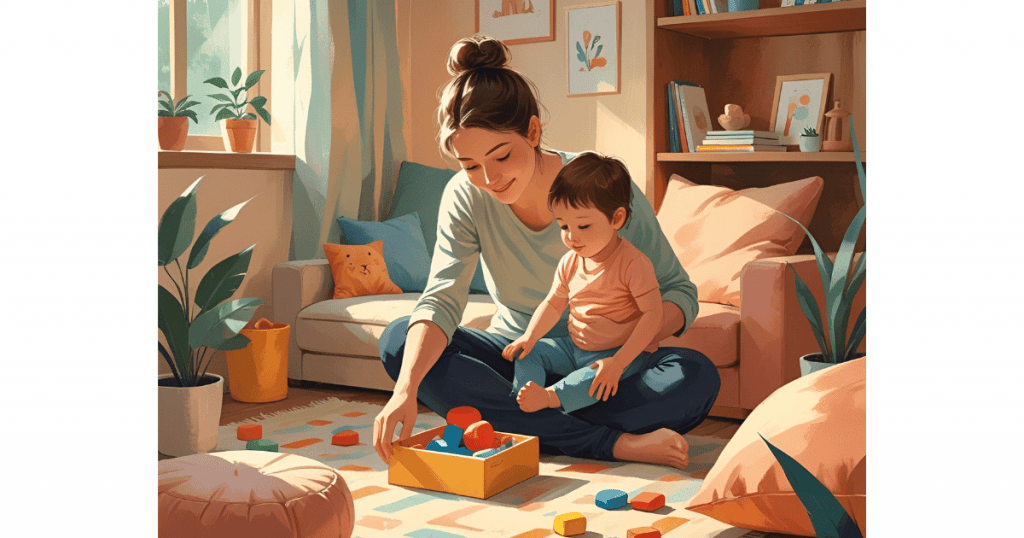Supporting your autistic or developmentally delayed child to build conversation skills can feel overwhelming. But with the right strategies, it’s absolutely possible. At SAAAC Autism Centre, we help families like yours every day develop tools that foster confidence, connection, and communication.
In this blog, we’ll break down what conversation skills actually involve, the foundational abilities your child needs to develop, and practical ways you can support them at home—turning everyday moments into opportunities for growth.
Why Conversation Skills Matter
Conversation skills are more than just talking—they’re a bridge to connection, learning, and independence. Think of conversations as a dance between two people, where each person takes turns leading and following. For autistic children and those with developmental delays, learning this dance requires intentional teaching and practice, but progress is always possible.
These skills build on several interconnected foundations:
- Understanding others (receptive language) means your child can follow what someone is saying and respond appropriately.
- Sharing thoughts clearly (expressive language) allows them to communicate their needs, ideas, and feelings.
- Proper sentence structure helps their messages come across clearly.
- Social language skills help them navigate the unwritten rules of conversation—like knowing when it’s their turn to speak or how to stay on topic.
The beautiful thing about conversation skills is that they reinforce each other. As your child gets better at understanding others, they become more confident in expressing themselves. As they practice taking turns in conversation, they develop better listening skills. Every small improvement creates a foundation for the next step forward.

Step 1: Build a Strong Foundation
Before diving into conversation practice, it’s essential to strengthen your child’s basic language skills first. Think of this like building a house—you need a solid foundation before you can add the walls and roof.
Understanding Others (Receptive Language)
This is your child’s ability to understand what’s being said to them. Many parents focus heavily on getting their child to talk, but understanding comes first. If your child struggles to follow simple instructions or seems confused when you ask questions, they may need more support in this area.
You can build understanding through your daily routines. The key is to use simple, clear language consistently while narrating what you’re doing and asking questions at the right level.

Examples of building understanding:
- During breakfast: “I’m putting the bread in the toaster. Now I’m getting the butter from the fridge.”
- During bath time: Label body parts, water temperature, and actions
- Instead of “What do you want for lunch?” try “Do you want a sandwich or soup?” (giving concrete choices)
As understanding grows, ask more open-ended questions. Watch their body language and actions—these tell you more than words sometimes
Sharing Thoughts (Expressive Language)
This is how your child communicates their own ideas, needs, and feelings. Some children express themselves through words, others through gestures, pictures, or assistive technology. All forms of communication are valid and valuable.
Start where your child is and build from there. All forms of communication are valid and valuable—words, gestures, pictures, or assistive technology.
Examples of building expressive language:
- When they say “juice,” respond with “Oh, you want some juice! You want apple juice in your red cup.”
- If they point to cookies, say “You’re pointing to the cookies. You want a cookie!”
- If they’re using two-word phrases, model three to four-word sentences
- Keep your sentences at or slightly above their current level—achievable, not overwhelming
- Remember: children need thousands of exposures before using a word independently
Sentence Structure (Syntax & Grammar)
Children learn proper sentence structure by hearing it consistently. You don’t need to explicitly teach grammar rules—instead, provide rich models through your everyday speech.
Examples of modeling grammar:
- When your child says “Him go park,” respond with “Yes, he went to the park! He had fun at the park.” This gentle correction (called a recast) gives them the right model without making them feel wrong
- For children just combining words: “Dad is cooking. Dad is making pasta.”
- As skills grow, add details: “Dad is cooking dinner in the kitchen. He’s making your favorite pasta with cheese.”
Shared Focus (Joint Attention)
Joint attention happens when two people focus on the same thing together—and it’s crucial for conversation development. This shared experience creates connection and gives you something to talk about.
Examples of practicing joint attention:
- Follow your child’s interests: If they’re fascinated by a spinning toy, sit with them and comment: “Look how fast it spins! The colors are blending together. I see red and blue making purple!”
- While reading books: Point to pictures and talk about what you see together
- During everyday activities: While folding laundry, both notice dad’s shirt has a hole—this becomes natural conversation about what happened and whether it can be fixed
- Point to details and use descriptive language about what you’re both experiencing
Step 2: Create a Comfortable Space for Learning
A child who is happy, relaxed, and engaged (what we call “HRE”) is much more likely to learn and participate in conversations. This isn’t just about being physically comfortable—it’s about feeling emotionally safe and cognitively ready to engage.
Observe your child carefully to understand what helps them feel regulated and ready to communicate.

Examples of creating comfort:
- Some children focus better with background music, others need complete quiet
- Some need to move while talking, others prefer sitting still
- Some communicate best right after physical activity, others need calm-down time first
- Address sensory needs: Let them wear their favorite soft shirt, practice in quieter rooms away from household noise
- Allow stimming behaviors (unless dangerous) – a child fidgeting with a stress ball might be much more available for communication than one forced to sit perfectly still
Step 3: Use Everyday Moments as Learning Opportunities
The most powerful conversation practice happens during real life, not during formal lessons. Your daily routines are full of natural opportunities to practice communication skills, and these authentic contexts help children understand why conversation matters.
Start with Special Interests
Your child’s special interests are golden opportunities for conversation practice. When children talk about topics they’re passionate about, they’re naturally motivated to communicate and have genuine thoughts to share.

Examples of using special interests:
- If your child loves trains: Talk about different types, where they go, how they work, sounds they make
- Ask open-ended questions: “What’s your favorite thing about trains?” or “What do you think the people on the train are doing?”
- For video games or TV shows: Learn character names, ask about plot details, show genuine curiosity
- Connect interests to other topics: A child who loves dinosaurs might enjoy talking about museums, paleontologists, or books about fossils
Building Bridges to New Topics
Once your child is comfortable talking about their favorite subjects, you can start building bridges to new conversation topics. This requires patience and creativity. If your child loves Minecraft, you might talk about the real-world equivalents of things they build in the game. Building a house in Minecraft can lead to conversations about real houses, construction workers, or even discussions about your own home.
The goal isn’t to abandon their interests, but to use them as a launching pad for broader communication. A child who can talk enthusiastically about Pokemon characters might be ready to talk about pets, since both involve caring for creatures with different abilities and personalities.
Step 4: Evidence-Based Teaching Strategies
Professional therapists use specific strategies to help children develop conversation skills, and you can adapt these approaches for home use.
Real-Life Teaching (Incidental Teaching)
This approach uses naturally occurring situations to practice communication skills instead of formal lessons.
Examples of real-life teaching:
- When you drop a spoon, run out of milk, or can’t find the remote, say: “Oh no! I need to find the key. Can you help me remember where I put it?”
- If your child wants a snack but the cabinet is locked, create natural problem-solving conversations
- Use unexpected moments as opportunities for your child to communicate, problem-solve, and engage in meaningful back-and-forth about real situations that matter to them.

Creating Structure (Rule-Based Teaching)
Some children thrive when they understand the rules and expectations of conversation.
Examples of creating structure:
- Simple rules: “First I talk, then you talk” or “We both talk about the same thing”
- Visual supports: A turn-taking card that you pass back and forth to show whose turn it is to speak
- Topic cards: Pictures or words to help keep conversations focused when children jump between subjects
- These frameworks help children understand social expectations without having to guess what’s expected
Activity-Based Learning
Shared activities naturally create opportunities for conversation because they give you something concrete to talk about.
Examples of activity-based learning:
- Cooking together: Describe ingredients, follow steps in sequence, talk about how things look, smell, and taste
- Art projects: Discuss colors, shapes, and creative choices
- Household chores: Turn simple tasks into conversation opportunities when done together
- Board games, puzzles, building activities: These have built-in opportunities for commenting, requesting help, and celebrating successes
- Choose activities that require cooperation or turn-taking to create natural pauses for communication
Step 5: Teaching Conversation Rules
Conversations have unwritten social rules that most children pick up naturally through observation and practice. Children with autism or developmental delays often need these rules taught explicitly and practiced repeatedly.

Taking Turns in Conversation
Turn-taking in conversation is different from turn-taking with toys—turns can be different lengths, and the pace can vary.
Examples of practicing turn-taking:
- Start structured: Use a talking stick or special hat—the person wearing it gets to talk while others listen
- Gradually make it less formal: Use subtle cues like nodding or saying “your turn” to indicate when to switch speakers
- Practice with activities that mirror conversation patterns
- Help them understand that sometimes people take quick back-and-forth turns, while other times one person talks longer
Staying on Topic
Staying on topic is challenging for many children, especially those with autism who may have intense interests they prefer to discuss.
Examples of helping with topic maintenance:
- Use bridging techniques: If talking about school and your child wants to discuss dinosaurs, try “That’s interesting about the T-Rex! Did you learn anything about dinosaurs at school today?”
- Create “topic boxes”: Choose a topic and see how long you can keep adding related comments and questions
- Practice honoring their interests while gently steering back to the original topic
- Rather than shutting down their topics completely, find connections between their interests and the current conversation
Reading Social Cues
Understanding when someone is interested, confused, or ready to end a conversation is a sophisticated skill that develops over time.
Examples of teaching social cue recognition:
- Narrate what you observe: “I can tell you’re excited about this because you’re talking faster and smiling!” or “Dad looks confused—maybe we should explain that part again.”
- Practice recognizing conversation endings: Phrases like “Well, I should get going” or “It was nice talking with you” signal someone is ready to wrap up
- Role-play scenarios so your child becomes familiar with polite ways to start and end conversations
- Help them notice basic signs of interest, confusion, or readiness to change topics
Practical Games and Activities
Conversation Chain
Create a paper chain where each link represents a successful conversational exchange. Start with a topic and see how many related comments and questions you can add before naturally moving to something else. This visual representation helps children see how conversations build and flow. The goal isn’t to make the longest possible chain, but to practice staying engaged with a topic and building on what others say.
Show and Tell Evolved
Move beyond traditional show and tell by encouraging deeper exploration of objects or topics. If your child brings a favorite toy, don’t just ask them to describe it—engage in a real conversation about it. Ask about how they got it, what they like to do with it, and what it reminds them of. Model asking follow-up questions and making related comments.
Story Building
Take turns adding sentences to create a story together. This practice helps with turn-taking, listening to others’ ideas, and building on shared themes. Start with simple, familiar scenarios and gradually introduce more creative elements. The collaborative nature of this activity mirrors real conversation skills.
Real-World Practice
Create opportunities for your child to practice conversation skills with others in low-pressure situations. This might mean talking to the librarian about finding books on their favorite topic, ordering their own food at a familiar restaurant, or calling grandparents to share news about their day.
Moving Forward with Patience and Hope
Remember that conversation skills develop over time, and every child’s timeline is different. Some children make rapid progress in understanding but need more time to express themselves. Others might talk easily about favorite topics but struggle with back-and-forth exchanges. This is all normal and expected.
Celebrate small victories along the way. The first time your child asks you a question, makes a comment about something you’re both experiencing, or waits for you to finish speaking before starting to talk—these are all significant milestones worth acknowledging.
SAAAC Programs That Can Help
When you’re ready for additional support, our specialized programs provide structured opportunities for children to practice conversation skills with peers and trained facilitators.
Our Conversation Crew (for ages 6-10) is designed for children who are speaking in full sentences and have some emerging conversation skills. In small groups, children practice the specific skills we’ve discussed in this blog—taking turns, staying on topic, asking questions, and making related comments. The program uses games, activities, and real-world scenarios to make learning engaging and fun.

Our Dyad Program offers a smaller, more intimate setting ideal for children who need more individualized support or are just beginning to engage in social interactions. This program allows for more personalized attention and can be adapted to meet your child’s specific needs and interests.
For children at different developmental stages, we also offer Social Buddies (for early learners) and Social Pals (for intermediate-level students). Each program is designed to meet children where they are and help them take their next steps forward.
Learn more about all our programs at saaac.org/programs.
You’re Not Alone in This Journey
Developing conversation skills is a marathon, not a sprint. There will be days when your child surprises you with a thoughtful question or comment, and other days when communication feels particularly challenging. Both experiences are part of the journey.
Remember that your child is learning not just the mechanics of conversation, but the joy of human connection. Every time you engage with their interests, listen patiently to their thoughts, and respond with genuine curiosity and care, you’re teaching them that their voice matters and that communication is worthwhile.
Progress may look different than you expected—it might come in sudden bursts followed by quiet periods, or it might be so gradual that you don’t notice it day by day. Trust the process, celebrate the small moments, and remember that with encouragement, consistency, and the right strategies, your child can develop the conversation skills they need to connect, share, and shine in their own unique way.
